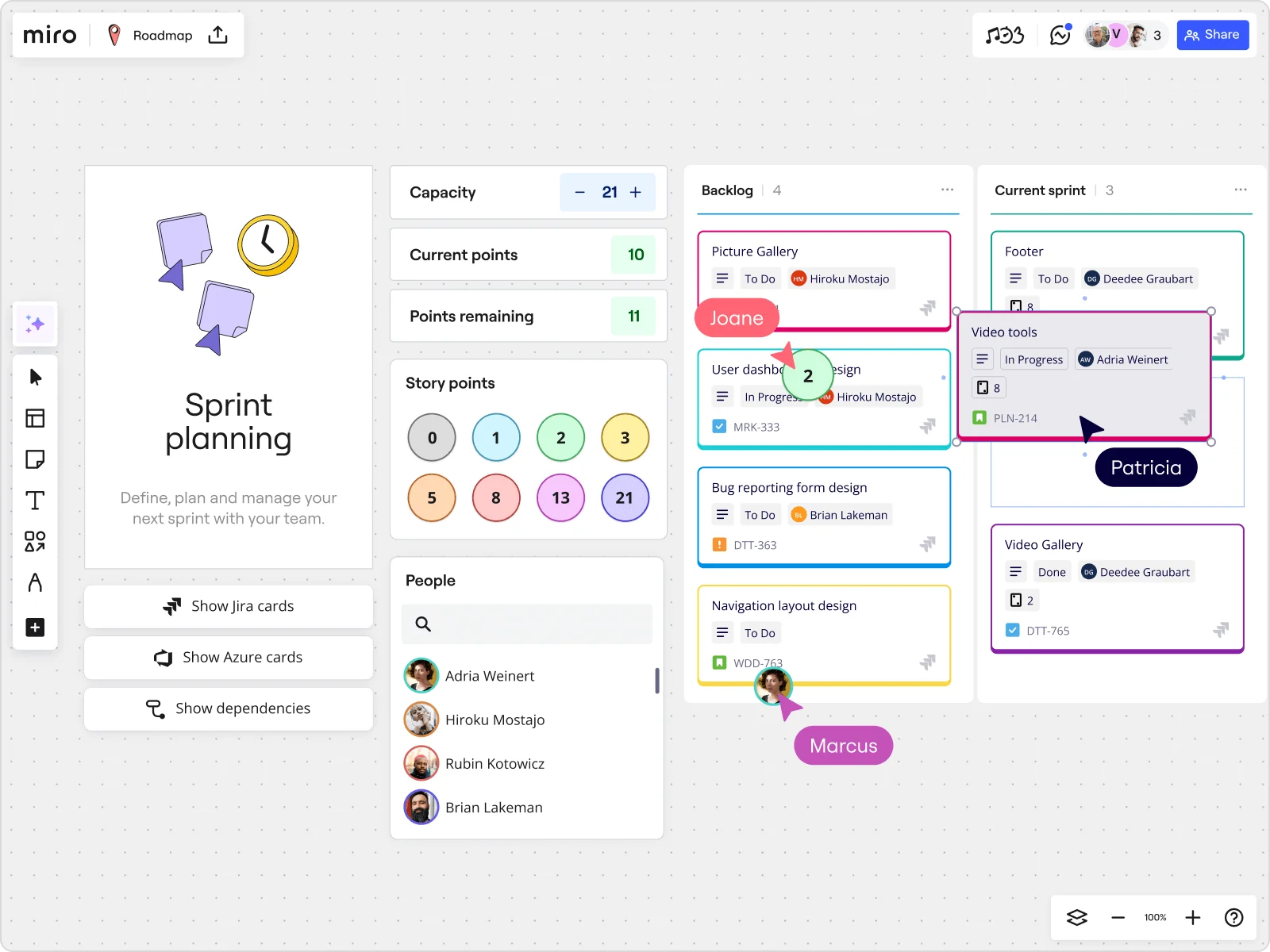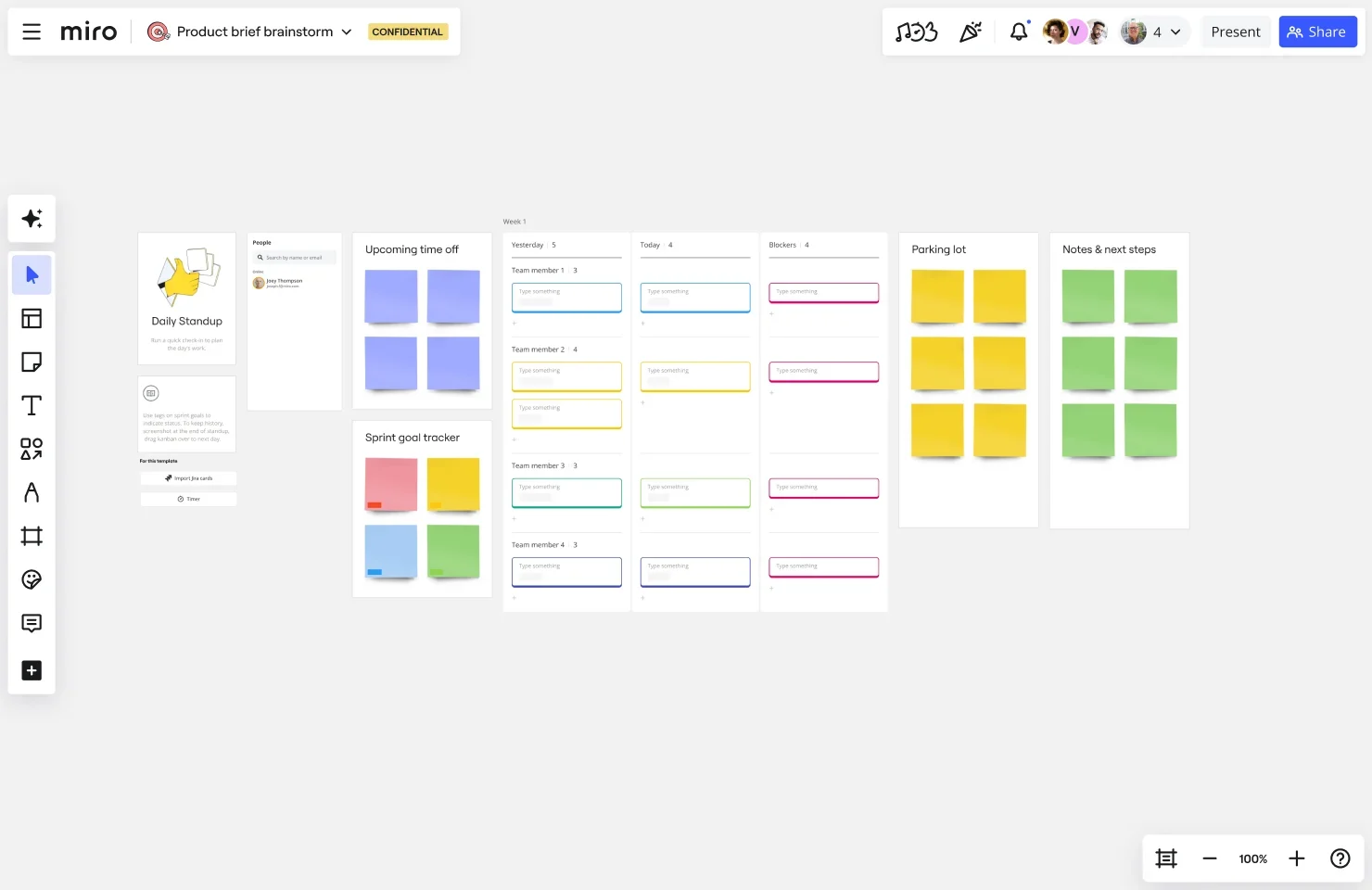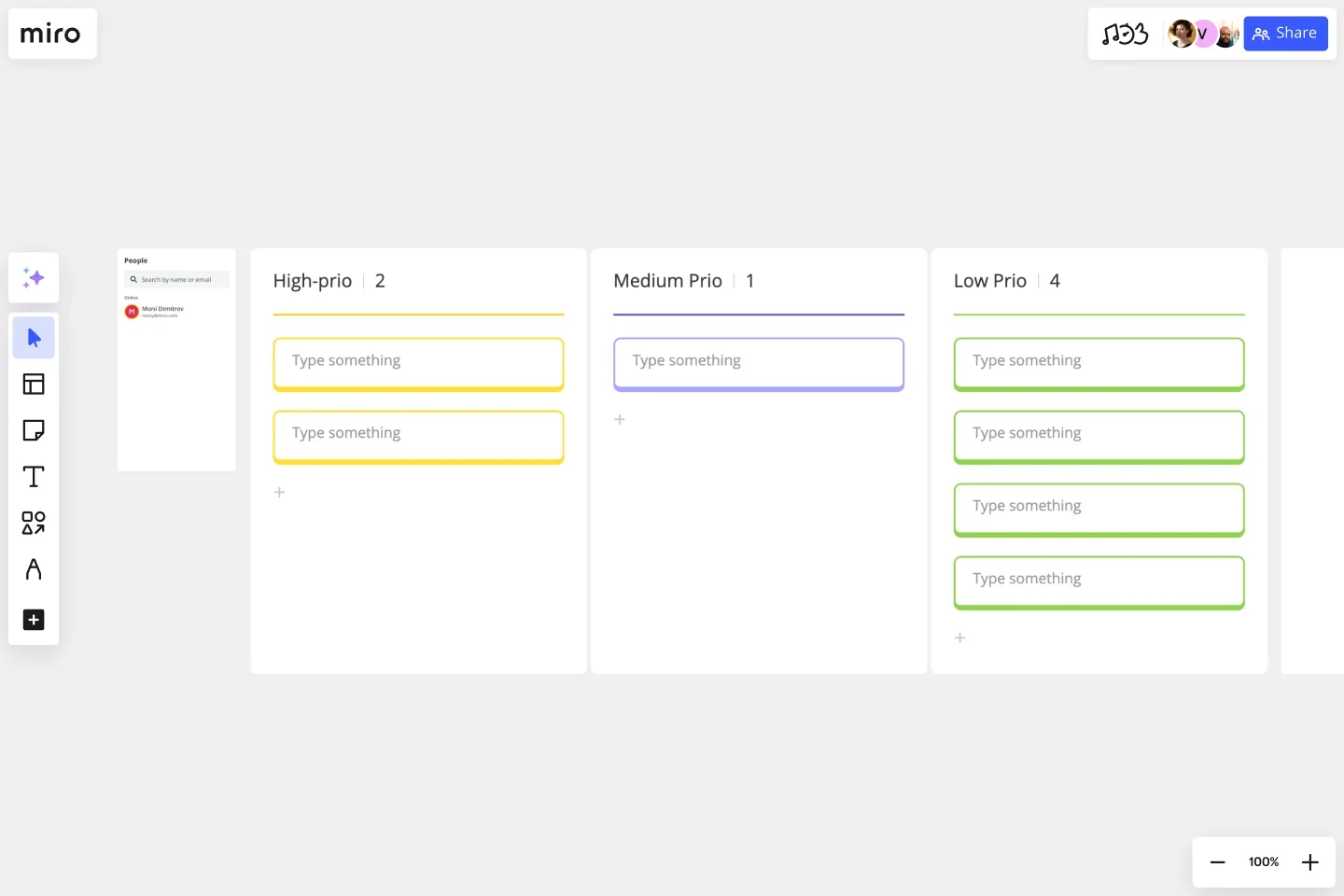
Table of contents
Table of contents
Scrum of Scrums — the ultimate guide

Summary
In this guide, you will learn:
What Scrum of Scrums is: a scaled agile technique to coordinate multiple Scrum teams.
How Scrum of Scrums meetings involve representatives (often Scrum Masters) sharing progress, challenges, and dependencies.
The importance of team size and structure in scaling Scrum effectively, including balancing skills and managing communication.
Typical Scrum of Scrums meeting frequency and format, which can be less frequent than daily scrums and adapted for remote/hybrid settings.
How Scrum of Scrums supports transparency, inspection, and adaptation at scale to deliver integrated solutions.
The potential to scale further into Scrum-of-Scrums-of-Scrums for very large projects, with noted limitations.
Try Miro now
Join thousands of teams using Miro to do their best work yet.
Scrum of Scrums (SoS) is an Agile approach designed to scale collaboration across multiple teams. When projects involve several Scrum teams, aligning communication and progress becomes a challenge. The Scrum of Scrums framework ensures teams stay coordinated and focused on shared goals.
In this guide, we’ll cover what Scrum of Scrums is, how it works, its benefits, and how to implement it effectively in your projects.
What is Scrum of Scrums (SoS)?
Scrum of Scrums (SoS) is a coordination framework that allows multiple Scrum teams to work together on large-scale projects. Representatives from each team meet regularly to address progress, dependencies, and obstacles affecting the overall project. SoS meetings are especially common in scaled Agile environments like Scrum of Scrums SAFe (Scaled Agile Framework), which focuses on integrating multiple teams into one cohesive effort.
Benefits of leveraging a Scrum of Scrums
Adopting a Scrum of Scrums framework offers several advantages for large-scale Agile projects.
Improved communication across teams
Scrum of Scrums bridges communication gaps by creating a regular forum for representatives to share updates and discuss challenges. This ensures all teams are aligned and reduces the risk of miscommunication or missed dependencies.
Faster resolution of issues
By surfacing blockers and risks early, teams can resolve cross-team challenges before they impact timelines. This leads to fewer delays and a smoother overall workflow.
Better risk management
Scrum of Scrums helps identify dependencies, risks, and resource constraints at a higher level. With a clear view of these factors, teams can proactively mitigate risks and keep the project on track.
Scaled Agile implementation
Scrum of Scrums ensures that Agile principles like transparency, collaboration, and adaptability are maintained, even when working with multiple teams on complex projects.
How does a Scrum of Scrums work?
A Scrum of Scrums provides a structured communication framework for scaling Scrum across teams. Here’s how it operates:
Scrum of Scrums meeting structure
In SoS meetings, representatives answer three key questions:
What has your team accomplished since the last Scrum of Scrums?
This provides visibility into recent progress and achievements.
What will your team do before the next Scrum of Scrums?
Teams outline upcoming goals, ensuring alignment on priorities.
Are there any blockers or dependencies affecting your progress?
Identifying challenges early allows for collaborative problem-solving and resource reallocation if needed.
This structured approach keeps meetings focused and productive.
Daily stand-up vs. daily Scrum
Daily stand-ups address a single team’s progress and challenges, while Scrum of Scrums meetings are for representatives of multiple teams. The focus shifts from individual tasks to higher-level goals and cross-team collaboration.

Who participates in Scrum of Scrums meetings?
Participants in Scrum of Scrums meetings are carefully selected to ensure effective representation and problem-solving.
Scrum Masters
Scrum Masters typically attend to represent their teams, providing updates on progress and escalating issues that require cross-team collaboration.
Technical leads or team representatives
Technical leads or team members with deep project knowledge often join to discuss dependencies, blockers, and technical challenges.
Stakeholders (when needed)
Stakeholders may occasionally attend as observers or to provide input on high-priority issues. However, their role is typically limited to decision-making rather than active participation.
By involving the right people, Scrum of Scrums meetings remain focused and efficient.
How to run Scrum of Scrums meetings
Running effective Scrum of Scrums meetings requires structure and consistency.
Set a regular schedule
Determine how often SoS meetings will occur based on project needs. Daily or weekly meetings work well depending on the complexity and urgency of the project.
Use a Scrum of Scrums agenda
An agenda template helps ensure that meetings stay focused. Include time for progress updates, discussing blockers, and aligning on next steps. This structure minimizes wasted time and keeps discussions productive.
Document key outcomes
Always document updates, blockers, and resolutions during SoS meetings. Sharing this information with all teams ensures transparency and helps track progress across the project.
What does Scrum of Scrums report?
A Scrum of Scrums report summarizes key updates and outcomes from SoS meetings. It acts as a single source of truth for project alignment.
Team progress updates
The report includes what each team has accomplished, providing a clear picture of the project’s current status.
Planned next steps
Outlining each team’s priorities for the next cycle ensures that everyone knows what to expect and can plan accordingly.
Blockers and dependencies
Highlighting cross-team challenges allows stakeholders to monitor risks and ensure timely resolutions. A well-maintained report is critical for maintaining alignment across all teams and stakeholders.
Common challenges of Scrum of Scrums
While Scrum of Scrums offers many benefits, it’s not without its challenges.
Coordination complexities
Aligning schedules for representatives from multiple teams can be difficult, especially in distributed or remote setups. Using tools like Miro can streamline collaboration by providing a centralized platform for updates and discussions.
Overlapping responsibilities
Roles and responsibilities can blur when teams are highly interdependent. Clear documentation of ownership and expectations helps avoid confusion.
Meeting fatigue
Too many lengthy meetings can overwhelm participants. Keeping Scrum of Scrums meetings concise and focused prevents burnout and maintains engagement.
Scrum of Scrums best practices
Applying a few Scrum of Scrums best practices can help keep your framework effective and scalable:
Use a Scrum of Scrums board
A Scrum of Scrums board tracks progress, blockers, and dependencies visually. Miro’s innovation workspace provides a customizable Scrum of Scrums template to centralize information and facilitate collaboration.
Track key metrics
Monitoring metrics like resolved blockers and sprint velocity helps evaluate the effectiveness of your SoS meetings and identify areas for improvement.
Keep meetings short and focused
Ensure SoS meetings don’t exceed 30 minutes. Use structured agendas to keep discussions on track and avoid unnecessary tangents.

Simplify Scrum of Scrums with Miro
Managing a Scrum of Scrums framework doesn’t have to be complicated. Miro’s innovation workspace offers an AI-powered visual canvas that helps teams easily create Scrum of Scrums boards, manage dependencies, and document progress — both in real-time and async.
Ready to improve cross-team collaboration? Sign up for Miro.
Author: Miro Team
Last update: October 2, 2025